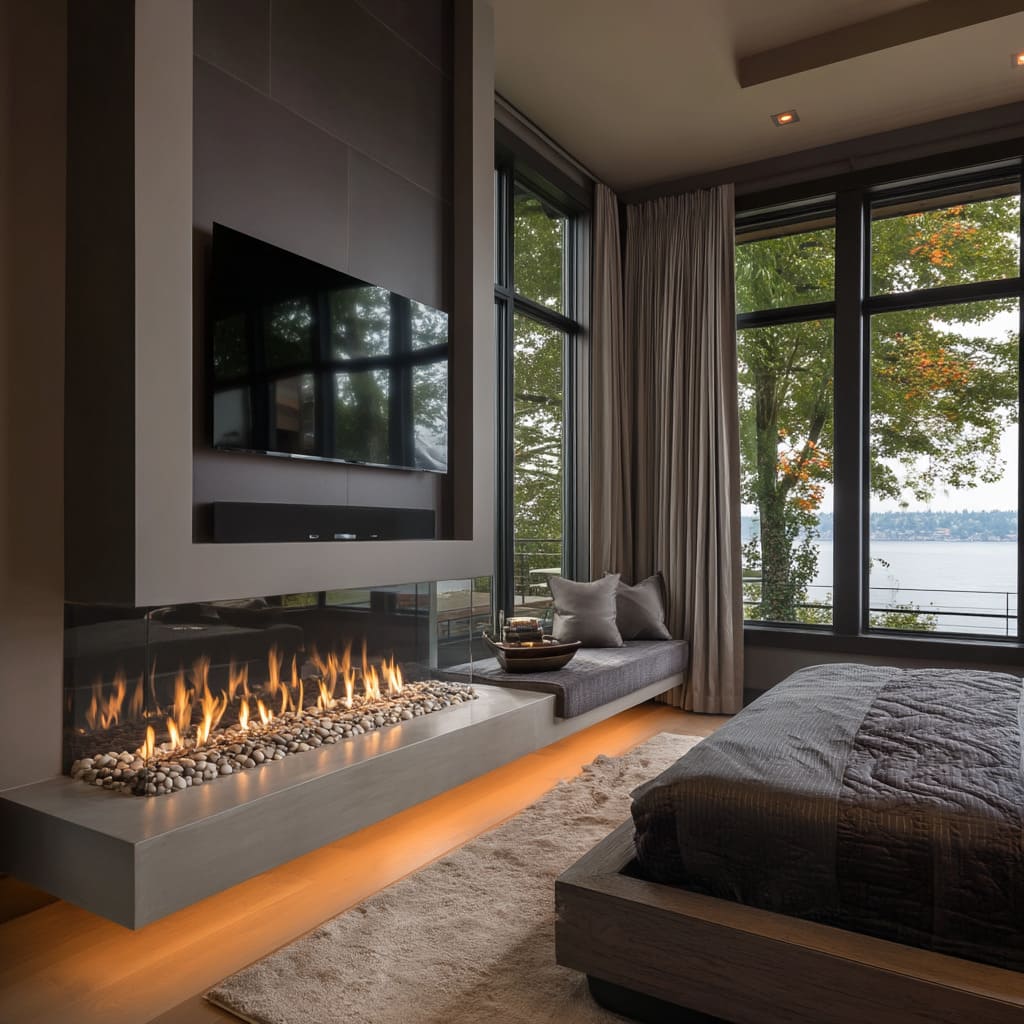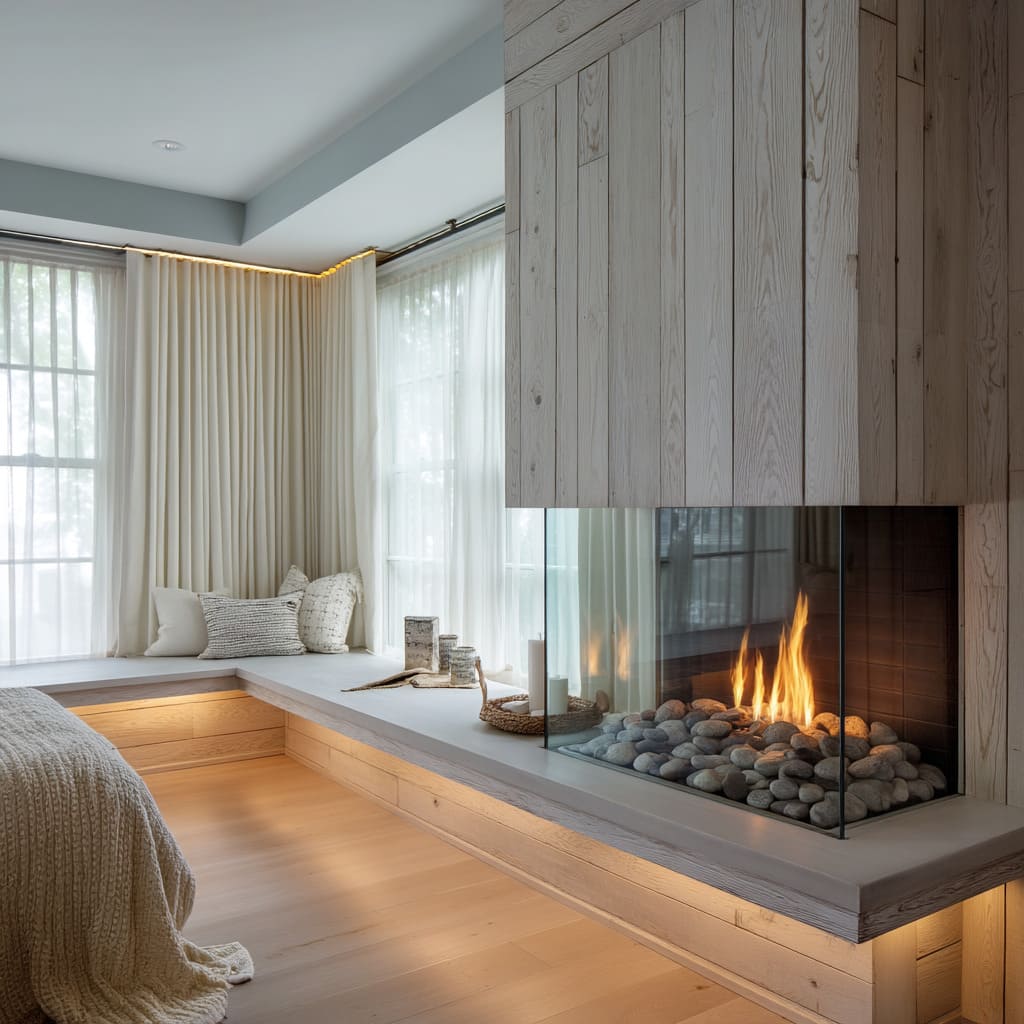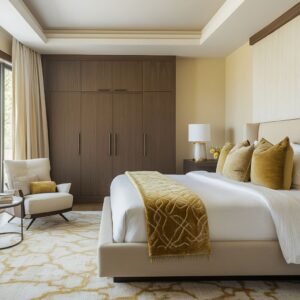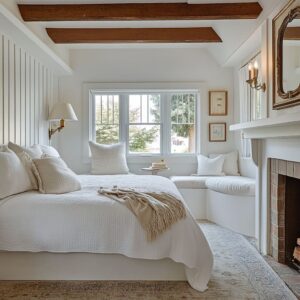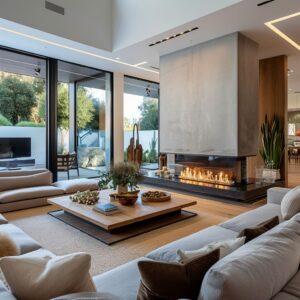Fireplaces in modern bedrooms have taken on new roles—less about heating and more about shaping how a room feels and functions. This article takes a close, detail-driven look at how these features are used today, focusing on real design moves rather than trend cycles.
It covers how fireplaces are being integrated into bedroom layouts with unexpected material choices, hidden structural tricks, and subtle lighting that shifts the mood.
Rather than offering generic ideas, the article highlights how specific textures, alignments, and forms can influence the atmosphere without overpowering the space. Some fireplaces are built flush into walls with barely any visible trim.
Others use uneven tile, natural wood, or polished stone to build contrast in the most restrained way. There’s also attention paid to how light plays across these materials—whether it’s low-level glow from under a hearth slab or cove lighting grazing across textured plaster.
For readers searching through bedroom fireplace ideas, this breakdown focuses on what actually makes these elements feel grounded, thoughtful, and comfortably modern. It’s a close look at the details that shape the whole experience—from how the flame is framed to how the room quietly responds to its presence.
Beyond the Obvious: Hidden Craft and Precision
Seamless Corners and Zero-Sightline Joints
Some designs feature glass units with barely any metal edging, causing flames to appear as though they hover. This effect often relies on specialized hardware or spot-on glazing that meets at a razor-thin corner.
Achieving a flawless floating illusion requires exact collaboration among suppliers and contractors. Even a small alignment issue can compromise the overall look.
Custom-Fitted Stone and Jigsaw Patterns
In certain cases, stone blocks are installed in offset layouts with precisely cut edges, forming puzzle-like compositions instead of standard grids. Each piece is carefully positioned to maintain a pleasing visual flow without lapsing into chaos.
This approach demands skilled stonecutters and extra time, but it yields a more artistic effect than typical stacked-stone veneers.
Tiling with Textured or Hand-Glazed Surfaces
High-sheen vertical tile or artisan-crafted zellige can seem straightforward at a distance. On closer inspection, subtle warps or color variations create a quiet interplay of reflections and shadows, especially as the light changes throughout the day.
Minor irregularities in handmade or textured tiles bring personality, helping the overall design maintain warmth instead of looking too clinical.
Integration with Surrounding Architecture
Benches placed at hearth height are a creative way to establish a smooth visual line. In some layouts, these benches run under windows, converting an unused corner into a snug little retreat.
This idea delivers comfortable seating and makes the fireplace feel like part of a cohesive architectural concept instead of an isolated element.
Columns that extend above the ceiling plane can mask vents or other structural necessities, but if managed with care, they appear like a deliberate design feature. Similarly, large panels may hide media equipment or storage.
A uniform wall surface emerges, keeping the fire’s glow front and center while tucking functional elements out of sight.
Sculpting and Composing with Materials
A notable technique is pairing surfaces that differ in texture. For instance, a rough stone slab next to polished wood can introduce a pleasing sense of contrast without depending solely on color.
Meanwhile, fireplaces that emphasize vertical cladding or tall ribs create the impression of added height, whereas horizontal hearths or broader openings can help the room feel more spacious. Another method is the floating hearth, which sometimes includes gentle under-lighting to soften the heavy look of materials like concrete or stone.
These concepts often show up in master bedroom fireplace ideas, delivering both style and everyday convenience. Even ideas for bedrooms with a chimney breast can benefit from similar methods: blending subtle texture contrasts, integrating hidden storage, and finding the right balance between vertical and horizontal lines.
Illumination Nuances
Many setups use hidden LED strips beneath benches or hearths to bathe the floor in a soft glow. This creates a comforting atmosphere at night and accentuates the floating look of a suspended slab.
It also offers a practical, low-level light source once the fire is off.
Some installations go further by washing light down from above, emphasizing stone, tile, or plaster textures. This adds definition after dark and highlights the fireplace’s architectural contours that might otherwise be overlooked in typical daytime conditions.
Decorative and Functional Embellishments
A fresh way to change the mood is through different firebox elements—like driftwood branches, translucent glass crystals, or polished pebbles. Each medium influences the final impression, from a rustic outdoor feel to a sleek, polished vibe.
Mantels can be equally important. A substantial wooden beam can give a room character, while minimal designs let the vertical surface continue uninterrupted.
Many master bedroom fireplace designs incorporate this idea thoughtfully, deciding whether a mantel should act as a display ledge or be omitted for an unbroken expanse of tile or stone.
Color palettes tend to remain on the gentler side—pale brick, soft sage, or sandy hues. This approach balances warmth with a light tone that works well in restful spaces.
Such combinations frequently appear in modern bedroom fireplace ideas, where smooth color transitions and interesting textures often take center stage.
Current Style Directions and Emerging Strategies
Simplicity paired with organic details is often visible where fireplaces seem almost frameless, while materials like rough-hewn wood or artisanal tile keep the look approachable. Larger windows or sliding doors placed alongside the fire can reflect natural backdrops, effectively blending an interior flame with whatever scenery lies outside.
In many cases, a three-sided or two-sided unit even acts as a low-profile divider between sleep and lounge areas, strengthening the sense of continuity.
Meanwhile, established design elements—like arched openings or traditional brick—receive a facelift through new finishes or sleek stonework, keeping a familiar yet refreshed aesthetic. One example is a modern fireplace in a bedroom that reimagines classic forms without losing their inherent charm.
Notable Subtle Touches
Tiny nooks under a raised hearth can house neatly stacked firewood, turning practicality into decoration. The arrangement of sconces or framed artwork around the fire is another tactic that keeps the space lively, both when the flames are on and off.
Many designers make sure that cabinetry lines, benches, and hearth edges line up exactly, creating a continuous horizontal band that guides the eye. Reflective surfaces such as polished tiles or carefully positioned glass inserts capture hints of the view outdoors, making the room feel more spacious.
And for anyone looking into electric fireplace bedroom ideas, these details still apply—using lighting, décor placement, and unified sightlines can elevate even the most contemporary insert.
Guidance for a Refined Bedroom Fireplace
If room dimensions allow, adding a bench or window seat near the fire can transform an unused corner into a welcoming spot.
Conclusion
Fireplaces in today’s bedrooms have taken on a more thoughtful and expansive role than ever before. They’re no longer confined to small inserts or basic mantels—they now span full walls, integrate with built-in seating, and in some cases, open on multiple sides to connect different parts of the space.
These features shift the fireplace from a background utility to a central element that quietly shapes the room’s personality.
Designers are leaning into soft color palettes, layered textures, and refined lighting to make these installations feel part of the architecture, not added on top of it. Whether it’s stone, tile, reclaimed wood, or smooth plaster, materials are chosen for their tactile quality as much as their visual appeal.
Light plays an important role, too—low-level LED strips under hearths or diffused glows from above allow the fire to remain a soft focal point day or night.
Even smaller layouts are now being treated with care, where floating hearths or corner units bring warmth without crowding the room. On the other hand, homeowners searching for fireplace ideas for master bedroom spaces often explore more expansive options, including feature walls or dual-sided units that visually connect sleep zones with sitting areas.






